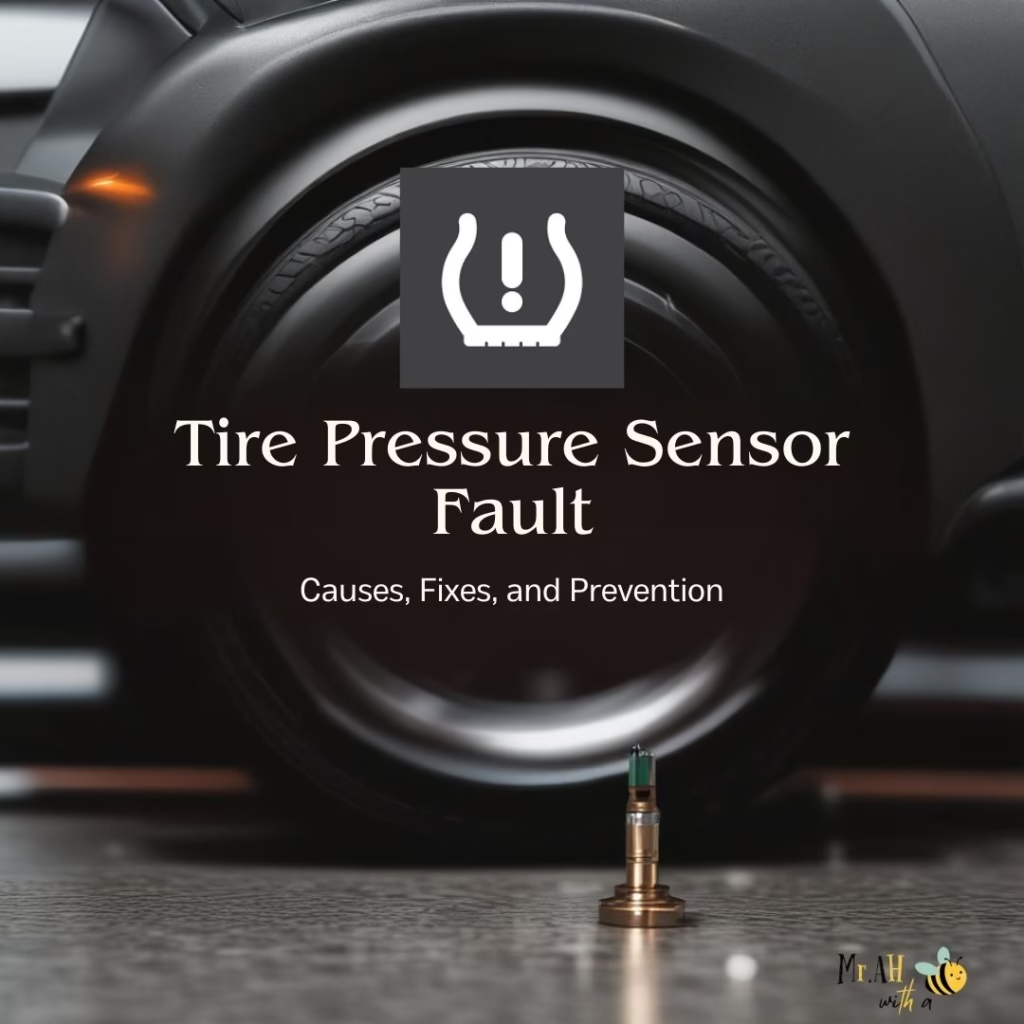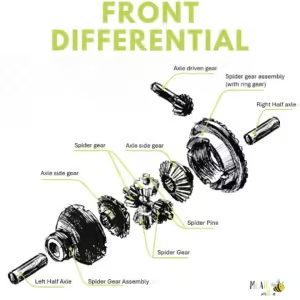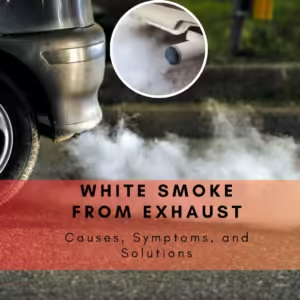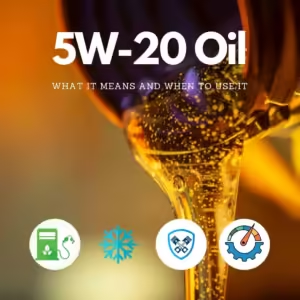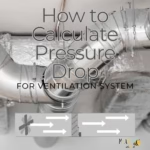Your vehicle’s Tire Pressure Monitoring System (TPMS) plays a vital role in alerting you when one or more tires are significantly under-inflated. Proper tire pressure is essential for safe driving, as under-inflated tires can lead to decreased performance, increased wear, and dangerous conditions. When low tire pressure is detected, the TPMS activates a warning light on your dashboard, typically a yellow symbol resembling a tire cross-section with an exclamation point. If this light illuminates, it’s crucial to check your tire pressures immediately. Additionally, you may encounter a tire pressure sensor fault, indicating an issue with the TPMS rather than low tire pressure. This can arise from a malfunctioning sensor or wiring problems. If you see this warning, it’s important to consult a professional to ensure accurate monitoring and maintain your vehicle’s safety.
Driving with low tire pressure can affect handling, braking, and fuel efficiency, making it vital to respond promptly to a TPMS alert. Regularly monitoring tire pressure and addressing any warnings from the TPMS can help ensure your safety on the road and prolong the life of your tires.
What is a Tire Pressure Sensor?
A tire pressure sensor is a compact electronic device installed within each tire of a vehicle. Its primary function is to continuously monitor the air pressure inside the tire and transmit this critical data to the car’s onboard computer system. By doing so, the sensor plays a vital role in ensuring the safety and performance of the vehicle.
When the tire pressure falls below a safe threshold, the sensor alerts the driver through a warning light on the dashboard. This visual indicator helps drivers quickly recognize potential issues, allowing them to address low tire pressure before it leads to unsafe driving conditions. This system is commonly known as the Tire Pressure Monitoring System (TPMS).
The TPMS not only enhances safety by reducing the risk of tire blowouts and improving handling, but it also contributes to better fuel efficiency and tire longevity. By keeping tires properly inflated, drivers can improve their vehicle’s overall performance and reduce wear and tear on the tires, ultimately saving money and enhancing road safety. Regularly checking tire pressure and heeding TPMS alerts is essential for maintaining optimal vehicle operation.
Types of Tire Pressure Sensors
Direct TPMS
Direct Tire Pressure Monitoring Systems (TPMS) utilize pressure monitoring sensors installed in each tire to track specific tire pressure levels, going beyond merely relying on wheel revolution data from the anti-lock brake system. This advanced technology allows for precise measurements, ensuring that drivers are informed about the actual pressure in each tire.
Additional Features
In addition to monitoring pressure, sensors in a direct TPMS can also provide valuable tire temperature readings, offering a comprehensive view of tire health. This data is transmitted wirelessly to a centralized control module within the vehicle, where it is analyzed and interpreted. If the system detects that tire pressure is below the recommended level, it sends an alert directly to the driver’s dashboard, illuminating a warning light to prompt immediate attention.
Unique Sensor Identification
Each tire pressure sensor is equipped with a unique serial number, enabling the system to differentiate between sensors and to identify pressure readings for each individual tire. This feature ensures that the monitoring system is both accurate and reliable, as it can effectively distinguish its data from that of other vehicles on the road.
Enhancing Vehicle Safety
Overall, direct TPMS enhances vehicle safety by providing real-time information about tire pressure and temperature, allowing drivers to maintain optimal tire performance, improve fuel efficiency, and reduce the risk of tire-related accidents. Regularly heeding TPMS alerts and monitoring tire conditions can lead to safer driving experiences and longer-lasting tires.
Pros and Cons
Pros:
- Provides precise tire pressure readings directly from within the tire.
- Not susceptible to inaccuracies caused by tire rotations or replacements.
- Easy resynchronization process following tire rotations or changes.
- The batteries in the sensors typically have a lifespan of around ten years.
Cons:
- Generally more expensive than an indirect TPMS.
- While the resynchronization process is straightforward, it may necessitate specialized and costly tools.
- The battery is usually not serviceable; if it runs out, the entire sensor needs to be replaced.
- Proprietary systems can complicate installation, servicing, and replacement for both consumers and auto shops.
- Sensors can be vulnerable to damage during the mounting and demounting process.
Indirect TPMS
An indirect Tire Pressure Monitoring System (TPMS) primarily utilizes wheel speed sensors, which are part of the anti-lock brake system. These sensors track the rate at which each wheel rotates and provide valuable data to the vehicle’s onboard computer systems. By comparing the rotational speeds of the wheels with one another and with other operational metrics, such as vehicle speed, the system can gather insights into tire performance.
Detecting Underinflation
The computer analyzes the rate of revolution for each wheel to infer the relative size and condition of the tires. If a wheel begins to spin faster than expected, the system interprets this as a potential sign of underinflation, prompting it to alert the driver accordingly.
Limitations of Indirect TPMS
It’s important to note that an indirect TPMS does not directly measure tire pressure. Unlike a tire gauge that provides precise pressure readings, an indirect system operates by monitoring tire rotation speeds. It sends signals to the computer, which activates the warning light when it detects any anomalies in the wheel rotation patterns. This method serves as an indirect indicator of tire pressure issues, making it a useful, albeit less precise, tool for maintaining tire safety.
Pros and Cons
Pros:
- Generally more affordable than a direct TPMS.
- Requires less programming and maintenance over time compared to a direct TPMS.
- Involves less overall installation and upkeep than its direct counterpart.
Cons:
- Can become inaccurate if you switch to larger or smaller tires.
- May provide unreliable readings if the tires are unevenly worn.
- Requires resetting after each tire is properly inflated.
- Needs to be reset following routine tire rotations.
Common Causes of Tire Pressure Sensor Faults
Battery Failure
Tire pressure sensors rely on batteries that have a finite lifespan. Over time, these batteries can deplete, leading to a loss of functionality. When the battery fails, the sensor can no longer transmit accurate data to the vehicle’s onboard computer, resulting in missed alerts about tire pressure changes.
Sensor Damage
Physical damage is another common issue that can affect tire pressure sensors. Road debris, such as stones or potholes, can impact the sensors, while improper installation during tire changes can also lead to faults. Any physical damage can compromise the sensor’s ability to accurately monitor tire pressure.
Software Issues
Software glitches in the vehicle’s onboard system can interfere with the communication between the tire pressure sensors and the computer. Such disruptions may prevent the system from receiving accurate data or issuing timely alerts, potentially compromising safety.
Environmental Factors
Extreme environmental conditions can also affect sensor performance. High temperatures can lead to battery drain, while moisture can cause corrosion or short circuits. Both factors can significantly impact the functionality and reliability of tire pressure sensors, making regular checks and maintenance essential for optimal performance.
Symptoms of Tire Pressure Sensor Faults
Dashboard Warning Light
The dashboard warning light serves as a crucial alert system, signaling potential issues with the tire pressure sensors or indicating that one or more tires may be under-inflated. When this light illuminates, it’s essential to investigate the cause promptly, as it could point to serious safety concerns that require immediate attention.
Inaccurate Readings
Another sign of malfunctioning tire pressure sensors is the display of incorrect pressure values. If the readings seem unusually high or low and do not align with the actual tire pressure, this could indicate a fault in the sensor itself or a problem with the onboard system. Relying on inaccurate readings can compromise vehicle safety and performance.
Frequent Alerts
Receiving frequent alerts despite having properly inflated tires is another concerning symptom. If the system continually triggers warnings, even when tire pressures are within the recommended levels, it may suggest a malfunctioning sensor or a communication issue within the system. Persistent alerts can lead to confusion and frustration, making it important to have the system checked to ensure accurate monitoring and reliable operation.
Diagnosing Tire Pressure Sensor Faults
Manual Check
One of the most straightforward methods to ensure accurate tire pressure is to perform a manual check using a tire gauge. This involves removing the valve cap from each tire and inserting the gauge to obtain a reading. Comparing these manual measurements with the vehicle’s TPMS readings can help identify discrepancies, indicating potential sensor issues or the need for inflation.
Use an OBD-II Scanner
For a more thorough diagnostics approach, utilizing an OBD-II scanner can be beneficial. This tool allows you to read fault codes from the vehicle’s onboard diagnostic system, helping to pinpoint specific issues with the tire pressure monitoring system or other related components. By interpreting these codes, you can gain insights into any malfunctions that may be affecting sensor performance.
Visual Inspection
Conducting a visual inspection of the tire pressure sensors is another effective way to identify problems. Look for signs of physical damage, such as cracks, corrosion, or loose connections, which could impair the sensors’ functionality. Ensuring that the sensors are securely installed and free from debris can help maintain accurate readings and reliable performance.
Consult a Mechanic
If you encounter persistent issues or complex diagnostics that exceed your expertise, it’s wise to consult a qualified mechanic. Professionals have the necessary tools and experience to conduct comprehensive diagnostics and repairs. They can address underlying problems that may not be immediately apparent, ensuring that your tire pressure monitoring system operates correctly and safely.
Solutions and Repairs for Tire Pressure Sensor Fault
Battery Replacement
Regularly checking and replacing sensor batteries is crucial for maintaining the functionality of your tire pressure monitoring system. Most sensor batteries have a limited lifespan, typically lasting around 5 to 10 years. If you notice a dashboard warning light or inaccurate readings, it may be time to replace the batteries. Ensuring that the batteries are fresh will help guarantee that the sensors can effectively transmit accurate pressure data to the vehicle’s onboard computer.
Sensor Replacement
If a tire pressure sensor is found to be physically damaged or malfunctioning, it is essential to install new sensors. Signs of damage could include cracks, corrosion, or failure to communicate with the vehicle’s system. Replacing damaged sensors not only restores the accuracy of the TPMS but also enhances overall vehicle safety by ensuring that tire pressures are monitored correctly.
Recalibration
After replacing batteries or sensors, recalibrating the tire pressure monitoring system is necessary to ensure accurate readings. This process involves resetting the TPMS to synchronize it with the new components. Recalibration helps the system recognize the new sensors and maintain proper monitoring, allowing for timely alerts regarding tire pressure changes.
Software Updates
Keeping the vehicle’s onboard system up to date is also vital in preventing and resolving glitches that may impact the TPMS. Software updates can address bugs, enhance system performance, and improve communication between sensors and the vehicle’s computer. Regularly checking for and applying these updates can help ensure that your tire pressure monitoring system operates smoothly and reliably.
Preventive Measures for Tire Pressure Sensor Fault
- Regularly check tire pressure and maintain proper inflation.
- Inspect sensors during tire changes or maintenance.
- Avoid harsh driving conditions that may damage sensors.
Conclusion
The Tire Pressure Monitoring System (TPMS) is an essential safety feature in your vehicle, alerting you when tire pressure is significantly low. Maintaining proper tire pressure is crucial for safe driving, as under-inflated tires can lead to poor vehicle performance, increased tire wear, and hazardous driving conditions. If the TPMS warning light illuminates, it is vital to check tire pressures immediately, as this could indicate a serious issue, such as a tire pressure sensor fault.
Regular maintenance, including battery checks, sensor inspections, and recalibrations, is key to ensuring the TPMS functions correctly. Additionally, being aware of common symptoms of sensor faults, such as inaccurate readings and frequent alerts, can help you address potential problems early. By prioritizing tire health and responding promptly to TPMS alerts, you can enhance your vehicle’s safety, performance, and longevity on the road.
FAQs
- What is a tire pressure sensor fault?
It indicates a malfunction in the tire pressure monitoring system. - What causes tire pressure sensor fault?
Battery depletion, sensor damage, software glitches, or environmental factors. - Can I drive with a faulty tire pressure sensor?
It’s possible, but risky due to potential underinflation. - How do I fix a faulty sensor?
Replace the battery, recalibrate the system, or install a new sensor. - What does the TPMS warning light mean?
It signals low tire pressure or a sensor issue. - How often should I check sensors?
During routine tire inspections or if warnings occur. - Do all vehicles have TPMS?
Most modern vehicles are equipped with TPMS. - How long do sensor batteries last?
Around 5–10 years, depending on usage. - Can extreme temperatures affect sensors?
Yes, extreme cold or heat can impair sensor function. - Does TPMS let me know if my tires are over-inflated?
Most do. However, some features only detect under-inflation.
If you like this article you may also like
Thanks for reading, for more interesting articles, visit our homepage.

